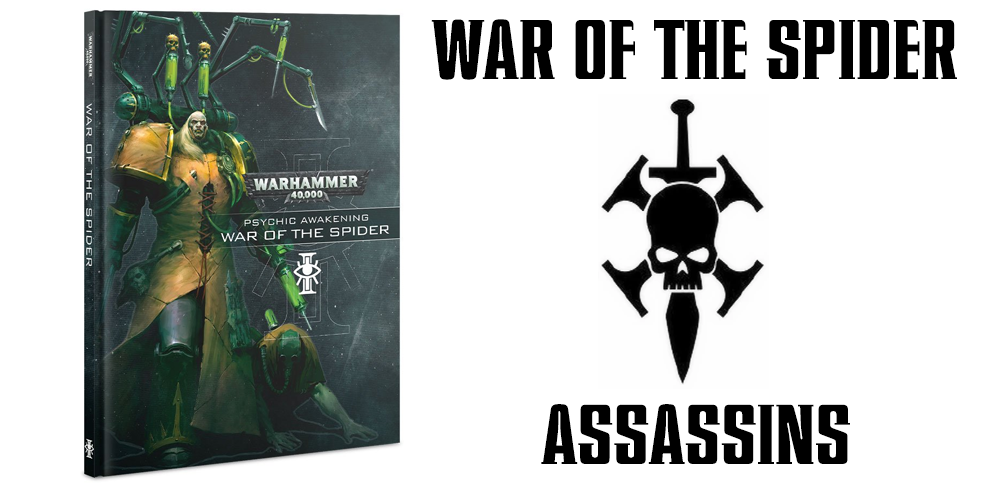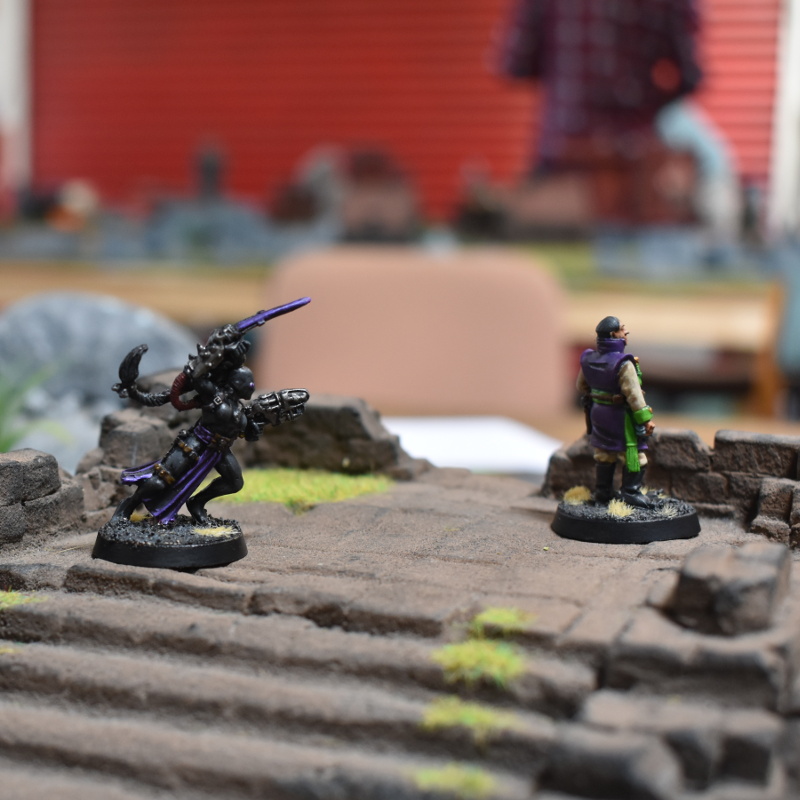Even with 9th on the horizon War of the Spider (WotS) hasn’t held back on the flood of content, with a mighty five different sets of rules to talk about. We’ve covered off the big ones, and to finish off I’ll be looking at the two stragglers – Sisters of Silence and Assassins.
Both of these “factions” have been around in some form since the start of 8th Edition, and Assassins got a hefty shot in the arm early last year with a White Dwarf supplement, which made them all the rage for an extended period. Part of the reason I’m picking this part of WotS up is that I wrote extensively about playing both with and against Assassins at the time, so I’ve got form in the area. They’ve dropped off quite a bit in popularity due to the incompatibility of their rules with Space Marine Doctrines, Inquisitors being a better complement to many lists and cost hikes (both in points and CP to summon them) but even after that they still turn up now and then alongside Guard or Ad Mech. Sisters of Silence have had less success – while I actually have played against them in a successful list, they’ve always been held back by the contortions required to slot them into an army, and though they did get a recent White Dwarf Index it was extremely bare bones and didn’t really fix any of their problems.
The good news for fans of esoteric Imperial weirdos is that War of the Spider provides a big shot in the arm for both of these factions. Sisters of Silence finally get a stratagem sheet to give you a bit more of a reason to take them, and while it probably isn’t going to launch them into the big leagues it’s something, and they can also now be added to Custodes detachments, where I think there’s a good chance they’ll pop up as objective holders. Assassins meanwhile get some overhauled army-inclusion rules that work very much in their favour and have a real chance of firing them back onto the scene – though with the late-arriving caveat that it looks like 9th is going to weaken some of them a bit.
As always we’re going to dive into what’s changed for both of these forces and which options are worth your time and precious command points, but unlike a lot of factions you can’t really run either of these as dedicated armies, so rather than army lists at the end we’ll instead look at what sort of strategies they might be able to slot into. As we’ve learnt quite a bit more about 9th in the last few weeks I’ll at least be trying to think forward about how these rules will play with the upcoming changes – but I can’t promise to get everything right just yet!
Sisters of Silence
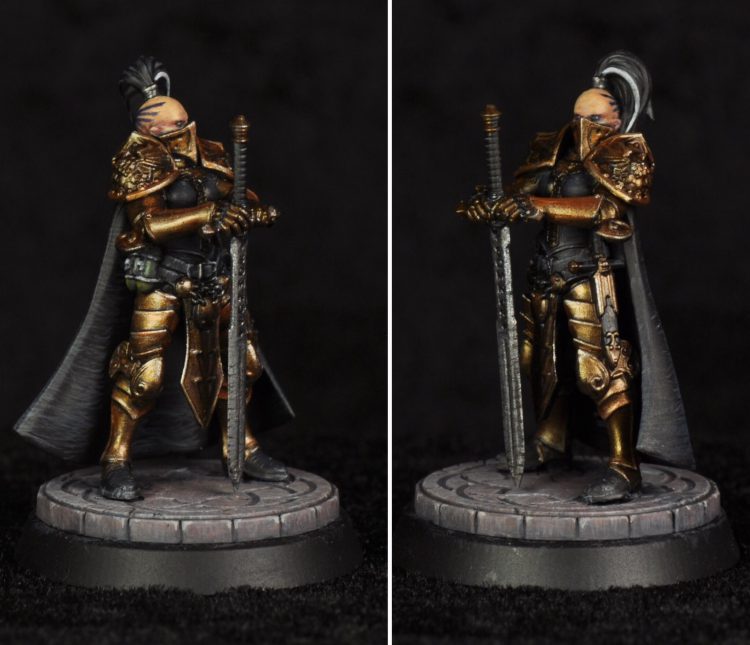
The meaningful changes to the Sisters of Silence are:
- Access to 8 new stratagems.
- A buff to Witch Hunters.
- A buff to Vigilators.
- The ability to be included in an Adeptus Custodes detachment without stopping it getting detachment abilities.
In addition to this, WotS reprints the current version of their datasheets from the White Dwarf index and codifies the FAQ rule allowing you to field a 0CP Vanguard detachment of them without having to include a character. Neither of these represent any significant change from what you could do before, but let’s have a very quick look at what the units actually do before we go further, as many players won’t be familiar with them.
Units
Sisters get four datasheets, representing three differently armed flavours of the Sisters themselves and then the Null Maiden Rhino as a transport to round them out.
All of the INFANTRY have a large number of things in common:
- The statline – they’re pretty elite, with 3+ for their WS/BS, 3+ saves, 2A a piece and a nippy 7″ move, but do suffer from only having S/T of 3. Their Sergeants get an extra attack and have a hefty Ld9, so aren’t likely to go anywhere.
- The Psychic Abomination special rule, making them unable to be targeted or affected by psychic powers, and giving enemy psykers within 18″ a cumulative -1 to cast/deny for each unit with this ability, to a maximum of -4.
- The Witch Hunters special rule, letting them re-roll wounds against PSYKERS. This is a buff from the White Dwarf version, where they only re-rolled melee wounds. They really don’t like psykers.
- Psyk-out grenades, which have a chance to inflict mortal wounds on Daemons or PSYKERs.
The poor Rhino does not get any of these special rules, differing only from a regular one in being able to carry the Sisters and having a chance to heal a wound each turn. It tries real hard though.
The three exciting flavours you can take the Sisters in are Prosecutors, Vigilators and Witchseekers, who each have kind of their own deal going on.
Prosecutors
First in line are the Prosecutors, who are a great exemplar of one of the weaker aspects of 8th edition in that they’re pretty dull but they’re also cost-effective so generally come out as the best. They’re 10ppm with the standard statline and wield boltguns. Their special trick is that they can use these to snipe PSYKER CHARACTERS, and in the new rules they also gain a dedicated stratagem in Punishment Fire, which turns their boltguns into 18″ range Assault 3 weapons for a phase, making even a small squad a reasonable threat to a weaker psyker that strolls too close. That’s especially true thanks to the buff to Witch Hunters – five of these blasting away with this strat on are now on a coin-flip to cleanly blow a Farseer away, with a mean output of 4.5 wounds.
Prosecutors are fine, and are are likely to remain the unit of choice out of this list of people want access to what the Sisters can bring. Under 8th’s detachment rules they suffer extremely badly from the comparison to Sisters of Battle, who bring similar bodies with many, many more command points in tow, but 9th has the potential to be pretty kind to these, which we’ll get to in a bit. Their statline makes them perfectly decent for lurking on a backline objective, and they’re good enough for their cost that if you want some of this faction’s special tricks, they can start looking really worth it.
Vigilators
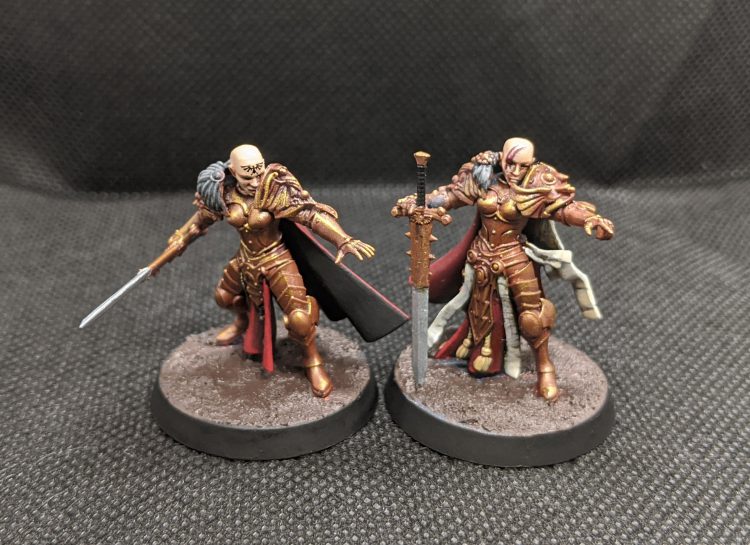
Vigilators are your melee option, packing the mighty executioner greatblade. “Mighty” used to be a bit of an overstatement, as it was only S4, but WotS buffs this to S5, and offers the Decapitating Strike stratagem, which for 1CP gives them a nice, clean +1 to wound in combat. These still feel like they’re a little short on weight of attacks to truly get there, but they can now punch pretty reasonably for their weight class against enemy elite infantry, and will absolutely make a mess of any psyker they touch. They do pay for this though, running to 15ppm instead of the Prosecutor’s 10.
With their buff I could maybe see myself switching one squad of Prosecutors out for these if I had the points to spare, and they’re a nasty threat to spring on anything that tries to flank you.
Witchseekers
Your final option are the Witchseekers, who wield flamers and run you 16ppm. An entire unit of flamer wielders is something relatively unique, but recent books have given us decent comparators in the Pteraxii Sterylizor and Serberys Sulphurhounds and that kind of shows up that these are just overcosted – you’re paying for both the full flamer unit gimmick and the Sisters gimmick, meaning that these are rarely operating efficiently in whatever role you need them to play. Their new stratagem, Purgation Sweep, doesn’t even make that much difference – it puts a floor of four on their shot counts, which protects you from a low roll and ups their average shots by one each, but a full squad already flattens the variance a bit, and it even goes up to a 2CP cost if you have 6+ models. Fundamentally these struggle for a niche, especially given that getting SoS into your army at all requires some contortions.
Stratagems
We’ve covered the three unit-specific stratagems already, and on top of these come five generic ones. You unlock these (and the previous ones) by either including a Sisters of Silence detachment in your army or adding any Sisters units to a Custodes detachment – so a single allied unit working with the golden boys can still pop these.
- Empyric Severance: As befits their status, Sisters get a potent version of the standard 4+ deny strat, trading 6″ of range for working on a 3+ rather than a 4+. As long as you’re willing to run them out in front of your high value targets, this combines with their innate anti-psyker aura to make Sisters very good at their job. A
- Talons: A stratagem specifically for working alongside the Adeptus Custodes. After a Custodes unit has shot or fought, you can give a Sisters unit re-rolls to hit for the phase. Has the definite issue that the sum total of output you get from any of these units just isn’t quite there – both Prosecutors and Vigilators like the re-rolls, but given that Custodes armies now have ample things they want to spend their CP on, any army that can use this by definition probably doesn’t want to. C
- Desperation’s Price: When a psyker suffers perils within 18″ of a Sisters squad, they take an additional d3 MWs for 1CP. This adds even further to the psychic defence angle, and makes them especially effective against armies that throw out high volumes of powers like Grey Knights and Thousand Sons, where sheer volume of dice rolled makes an eventual perils near unavoidable. Few psykers are entirely safe when suffering 2d3 MWs, and the chance of this totally ruining your opponent’s plans is real, for all that it’s necessarily situational. B
- Creeping Dread: For 1CP, you can pick a Sisters INFANTRY unit at the start of the phase, and any enemy within 6″ of them that makes an attack is at -1 to hit. This gives you a way of squeezing a last bit of value out of a screening squad, forcing your opponent to pick them off or take penalties when they might otherwise ignore then. B
- Immaterial Dissonance: When a squad hits a DAEMON or PSYKER unit with a Psyk out grenade, the target gets -1 to hit and can’t overwatch until the end of the turn. This is incredibly situational to the point where it’s very hard to plan around. Occasionally you will play against like, Grey Knights or a Bikelock Conclave and you will get your opponent good with it, but even then you have to be able to get the unit into position, and even then you’ll occasionally just miss, and then handsome sophisticated elves will point, laugh and kill you with Shurikens. Anyway, sorry, lost my train of thought there, this is like a C.
Entirely fittingly, the cream of the crop here are the anti-psyker tools, and that largely informs how I think Sisters will most plausibly be used.
Tactics
You can probably tell from the unit write-ups that even with these uplifts Sisters aren’t about to set the metagame on fire (sorry Witchseekers), but are there any uses for them?
Probably some! While we don’t yet know how much Vanguards cost in 9th, chances seem pretty high that the opportunity cost of adding a Sisters detachment to your army is going to be a bit lower than it was in 8th. The problem with trying to get them into armies in 8th wasn’t just that their own detachments were 0CP, it was that for only a few points more you could have a Battalion, coming with a juicy drop of CP to power whatever nonsense your main force was planning. Often armies doing this wanted screening and utility as well, but even if Sisters maybe did that slightly better than some other options, they couldn’t compete with the CP boost and some cheapo characters to sit in the backline.
In 9th that’s no longer the case – now if your army needs some accompanying infantry, it’s much more reasonable to pick your add-on based on what they bring to the table themselves. In addition, hot off the presses as of Thursday, cheapo characters are no longer nearly as valuable for camping backline objectives if they’re in the open, forcing you to keep back one of your units to screen them and allowing a determined opponent to shoot them out eventually.
With all of that, the question you now need to be asking in 9th is whether there’s anything Sisters do notably better than similarly-costed equivalents, and are there any armies that want that?
The answer to the first question is pretty clearly yes – if you are worried about the game’s two (maybe three, now Lords of Change are nastier) psychic firepower based armies ruining your day, three squads of Prosecutors are probably better than any other choice in their weight class for pushing back against that, while providing some moderately durable bodies at the same time.
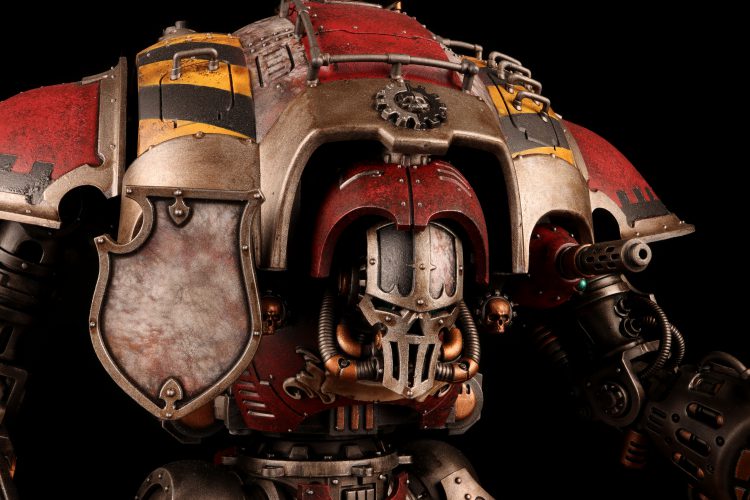
Credit: Pendulin
If the number of Grey Knight and Thousand Sons lists in the meta continues high going in to 9th, I think there’s a real chance that Imperial Knights could actively want what the Sisters are bringing. It’ll depend a little bit on exactly how the points hash out as to whether they can fit them, but an Imperial Knight army pushing up the board behind three units of Prosecutors is a complete nightmare for lists planning to use smite spam as their counter to armour, likely to buy you at least one turn completely untouched and heavily tilting the attrition scales your way. There are too many possible confounding factors for me to promise that this is true, but I think I can confidently say it’s more likely to work than in 8th.
Anything else? As I briefly touched on in the Custodes review, I think you’ll frequently see a single squad of Prosecutors slotted into Custodes lists now there are no penalties for doing so, as they’re the most cost efficient option the army has for leaving on a backline objective, and can also screen up-front against Tsons or GKs in a pinch, but beyond that not too many. Sisters are a highly skewed force very good at one thing, and it so happens that a few other highly skewed forces can play off them well, but slotting them into more balanced armies is a tougher ask.
Final Thoughts – Sisters of Silence
So, overall, do I think these rules are a success? Mostly yeah. Sisters are in a hugely difficult spot to produce material for, because their incredibly limited roster limits them to being a light presence in an army at best, without having a lot of the kind of upsides that make units attractive in soup. The new rules do help a lot – if you play Custodes it’s now worth owning a squad of Prosecutors, and there might be a place for them to buddy with Knights. It’s also important to acknowledge that for people who use the Sisters because they love the flavour and models the new rules are a big boon – they definitely will feel palpably more powerful than they did before on the tabletop.
Within the constraints they’re operating in then these are good – but really what the Sisters are crying out for is an HQ choice, moving Prosecutors to troops and maybe one more exciting unit so that they can be a more dramatic part of people’s games. They’ve gone an entire edition without any new models, but I guess we can never rule out the design team surprising us!
Assassins

Moving over to Assassins, there’s not a gigantic amount to talk about in the individual unit rules, as these largely remain the same. If you want our rundown of those, go check out our big Assasin guide (and just replace “85” with “95” because they caught a hike in CA).
There are still changes afoot however – accounting for WotS and 9th rules that we now know about, they’re getting one massive buff and one reasonably large nerf.
The Good – New Army Construction Rules
The exciting news for Imperial players is that taking an Assassin just got better for everyone and waaaaaay better for Space Marines and Grey Knights. Previously, if you wanted to take a solo Assassin your choices were to take an Auxiliary Support Detachment, using up a slot and costing a CP, or to spend 2CP on Operative Requisiton Sanctioned pre-game to summon one. In practice almost everyone used the second option to avoid using up a slot and allow flexibility in which Assassin you took, but critically that still broke any rule that required a “pure” army such as Doctrines and Masters of the Warp.
That is no longer the case. The basic method of inclusion for an Assassin is now a slightly tweaked version of the Inquisitor rule tied to their new AGENT OF THE IMPERIUM keyword – you can include one in a Patrol, Battalion or Brigade detachment without using a force organisation slot, breaking any detachment rules, or breaking army rules relying on shared keywords. You might be wondering if that means sacrificing the flexibility but no – in place of ORS, there’s now a new stratagem called Shadow Assignment that, as long as your army contains exactly one Assassin, lets you swap it with another one for 2CP during deployment.
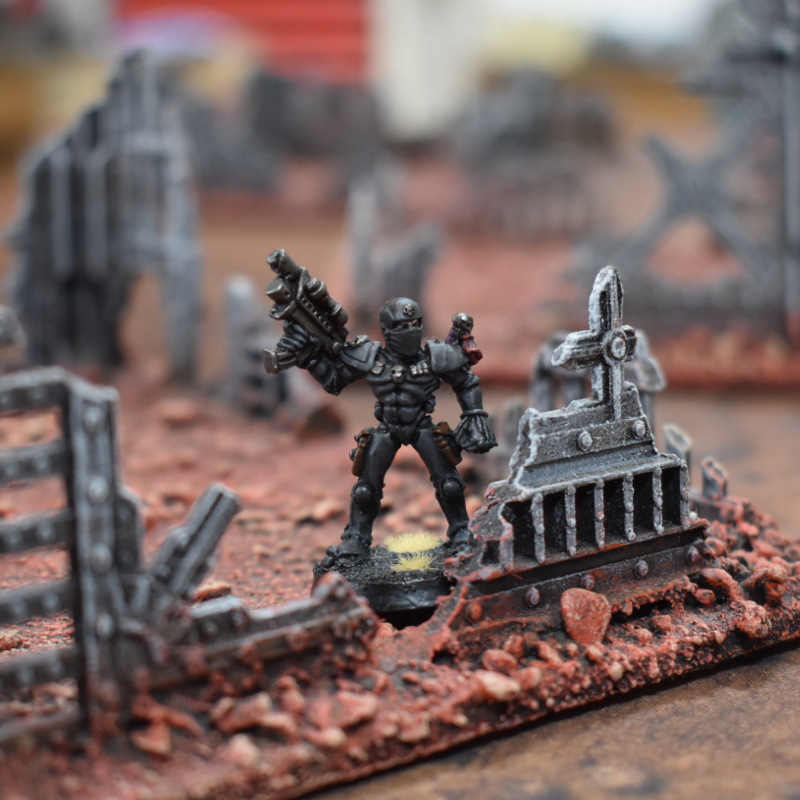
This is fantastic, because you get the best of all worlds. At baseline, you get to add whichever Assassin you think is most commonly going to be beneficial to your army without paying any CP, using a detachment or losing abilities. If you suddenly find yourself in a game where you really need a different one, the option to spend 2CP to swap out is still there for you. Alternatively, if you don’t mind not being able to swap and bring multiple qualifying detachments, you can have multiple Assassins in your army without needing to use a dedicated Execution Force – likely a positive come 9th.
The only big downside here is for pure Knight players, who now can’t add an Assassin in to one of their main detachments. However, once 9th hits I think it’s extremely unlikely that they’ll be using all their detachment slots, so using an Auxiliary Support will be an option (and you can still swap an Assassin included this way, as long as you only have one).
All of this is great for the people who were already using Assassins, and makes doing so actually realistic for the armies that were essentially walled off from them beforehand. However, it isn’t all good news…
The Bad – 9th Edition Changes
While it’s important to say that we still don’t have the full picture of what 9th edition is going to bring, the Look Out Sir rule, a replacement for 8th’s character targeting previewed on Thursday, is bad news for Assassins in general and the Vindicare in particular. A CHARACTER now needs friendlies nearby to become untargetable, so a Vindicare sitting alone on top of a building is now suddenly very exposed, with the further kick in the teeth that their current defensive rule giving -2 to hit them when they’re in cover doesn’t really help that much in 9th, with modifiers capped at -1. It’s possible that the promised day 1 FAQ will give them something else, but as it stands they now either need babysitting or run a high risk of getting blatted early on. The Callidus and Eversor suffer more moderately. It’s much more common to use them as either a “fire and forget” piece or have them in the thick of it, where this hurts less, but a strong use for both was as a reactive threat to things trying to deep strike in your backline, where they could kill off whatever your opponent had dropped in then squat on an objective for the rest of the game. The former still works, the latter not so much. The Culexus suffers least, and remains a pain to kill – which is good as he was already the weakest.
Realistically the new rule is going to change how everyone has to play with characters too, and that might have a further knock-on against Assassins – if characters are obliged to stay more cautious, it might be harder to find opportunities to pop in and get them.
I don’t think these changes rule out the use of Assassins, but I think they do incentivise you to try and get value quickly from ones you take.
Other Changes
There are a few other minor tweaks here:
- The Callidus Assassin’s poison blades no longer only wound VEHICLES on a 6+ – but as they’re fixed S2, that’s essentially irrelevant.
- The Eversor Assassin now gets bonus attacks when they heroic as well as charging – a minor but nice boost.
- The Culexus Assassin’s effects based on proximity to PSYKERS now specify “PSKYER unit” rather than just “PSYKER”, removing an arguable situation where a Grey Knight squad could choose a model outside the 18″ bubble to act as a focus for a power and not get the penalty.
- Priority Threat Neutralised now costs 0CP and has had the amount of CP it awards correspondingly reduced.
There are various wording changes to account for more recent standardised language, but these are the ones with an actual rules impact.
What It All Means
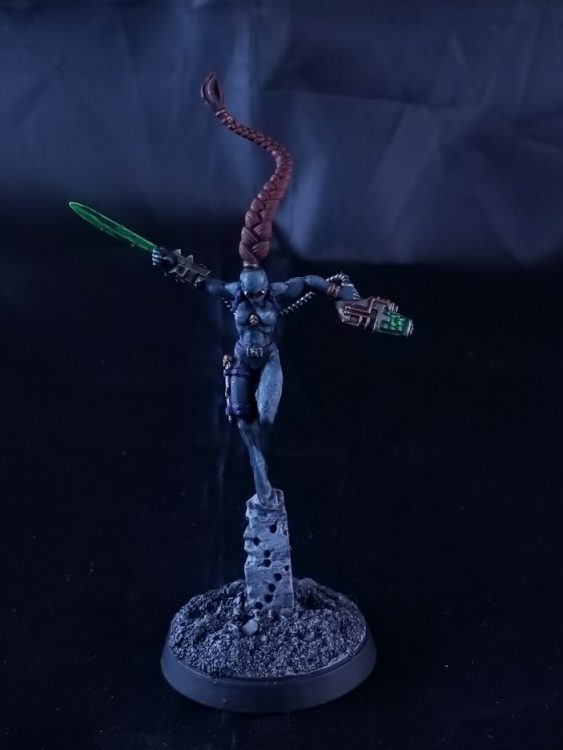
Realistically the answer to this changes quite a bit once the edition flips over, but there’s one unifying factor – I strongly recommend that Imperial players give Assassins a go, and that they start with the Callidus Assassin in their list most of the time.
The Callidus has always been my favourite of the Assassins because she gives you value up front. Her Reign of Confusion ability, which you can extend to an additional turn with Supreme Deception, heavily taxes your opponent’s early CP usage, and because of her threat to drop into the tiniest of gaps, she forces opponents to play extremely cautiously if they want to ensure their characters are safe. She’s also a pretty broadly applicable threat, dealing her damage with a mixture of mortal wounds and invulnerable save-ignoring D2 sword blows, and thus being able to do something against pretty much anything, with only T8 vehicles really escaping her. However, none of the Assassins are great at clearing those, and she at least still gives her CP tax value against a full Knightly house or something.
I feel like 9th only enhances this – without being able to keep an Assassin safe on the board as easily, the fact that she starts racking up value before she’s even on the table is a big boon, and on the occasions where she gets used offensively it’s usually a suicide mission anyway. Playing in a smaller space is also going to put pressure on your opponent to start spending CP straight away.
When adding an Assassin to your list post WotS you want to be picking the one that you’ll have to swap as infrequently as possible, and I’m near certain the Callidus is it. However, there are still times where you’ll want to consider swapping her out…
Vindicare

…or in the case of the Vindicare, maybe starting one, though my strong suggestion is that doing so is less good than you think. The place where I might consider it is if I was building a Space Marine force that was going heavy on Eliminators. Eliminators work super well with the VIndicare, because there’s no feeling worse than shooting a key character with one and missing the kill by a single wound. With an eliminator squad backing him up, they can easily plink a final wound off something he shoots, or tee up an easy kill for some CP regen. In 9th, they’ll also be good for making it slightly less trivial to shoot him off the board – while they do stop screening him once a single model goes down, if you set him up in between a couple of squads that starts to be a lot of hoops to jump through to get him off the board. You can also theoretically have the Eliminators hiding behind something while using their wallhack round while the Vindicare stands in sight but within 3″ of them. Marines building up a critical mass of sniper power is definitely a plausible place to start one of these.
In terms of when you might swap them in, I think the key matchups are:
- Orks
- Melee-focused chaos (so Daemons or Possessed Bomb).
Both of these tend to be heavy on juicy targets and limited in tools with which to shoot back. Against Orks in particular, you can use Double Kill to circumvent Grot Shields, which they often use to protect key characters from snipers, and just pop Weirdboyz and shokk attack Mekz all day. In 9th the Mekz might be able to shoot back but they’re only hitting on 6s and you have an invulnerable save, so they have to get real lucky to win a shoot out – and if they’re attempting to high roll your Assassin off the board they aren’t killing your other stuff. You want the Vindicare when there’s a target rich environment where he can operate with impunity, and these matchups are it!
Eversor
The Eversor is a weird one – he’s nasty on paper, but suffers from being very bad against Primaris Marines and an extremely blunt instrument that often doesn’t quite earn his keep. The read on him hasn’t changed massively and still makes him pretty niche – he’s at his best when you’re up against either hordes that don’t rely on buff characters (where a Vindicare is often better) or when facing elite T3 infantry. If the thing you’re most worried about in life is what you’re going to do when 30-50 feral Orks are rampaging around your lines than the Eversor is an OK reactive option. I can also just about see that he might have a place against Sisters of Battle – he’s a powerful counter-punch to throw into any of Zephyrim, Seraphim, or Repentia in a matchup where the others don’t excel quite as much – Sisters run stratagem light early game, weakening the Callidus, and their buff characters can resurrect, hurting the Vindicare.
Beyond that? Not much. The Eversor is perpetually a bit of a trap – he’s potent enough just on stats that he’s rarely a total disappointment, but you can very often do better.
Culexus
Continuing the “a bit of a trap” theme, the Culexus largely has a place in only two matchups – Grey Knights or Thousand Sons. It can be tempting to try and bring him to meddle with Eldar or Tyranid plans, but I guarantee you from my experience playing against them that players who have their psychic effects sourcing from a small number of fast models can work around him enough of the time for it not to matter. I am really trying to help here.
The psychic aura starts to matter when your opponent is relying on volume casting up close, which the two armies noted do. They also rely on smite firepower to do damage and thus, similar to what we discussed for Prosecutors, a well positioned Assassin can substantially blunt their damage ourput for a turn. The Assassin is also pretty nifty at killing Strike Marines, which is a welcome bonus in the Grey Knights game.
The only other place I might see a Culexus, post 9th, is being used by an army that wants a backline objective holder – the Culexus’s ability to only get hit on 6s makes him a lot harder to shoot off the board even when he can be targeted, so I guess could just about see use in that role. Not super convinced though so the advice remains – don’t start one in your lists, bring him on against GKs or Tsons, leave him on the shelf otherwise.
Wrap Up
That’s it for our rules review of War of the Spider, and I think it’s important to call out – this is a really good book and it’s a shame that it’s getting a bit overshadowed by the onrush of 9th. All the factions featured get some cool new toys and all of the rules feel very well tuned, making this a must-have for their players. I’m excited to see what Custodes and Death Guard players can put together with their hefty buffs, and the rest of the book gives some nice support for anyone wanting a unique twist on Chaos Marines or to use some of their Imperial outliers.
If you have any comments, questions or suggestions then hit us up at contact@goonhammer.com, otherwise (based on the current progression) we’ll see you in a couple weeks for Pariah.
